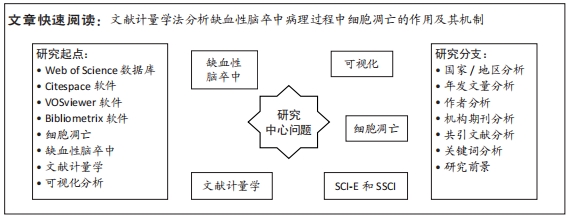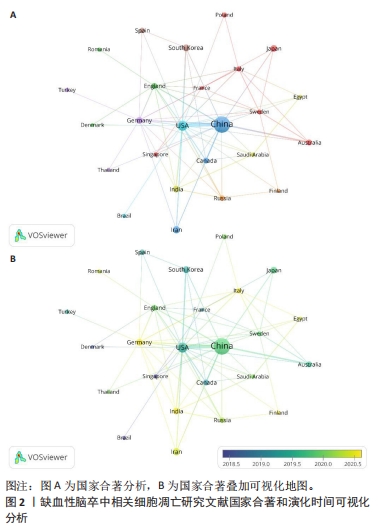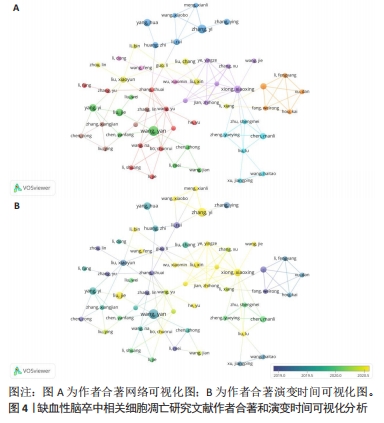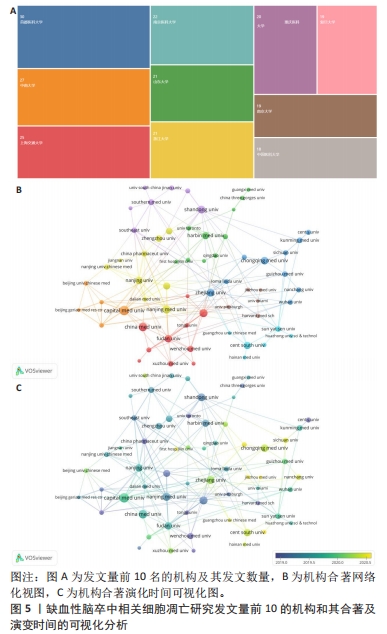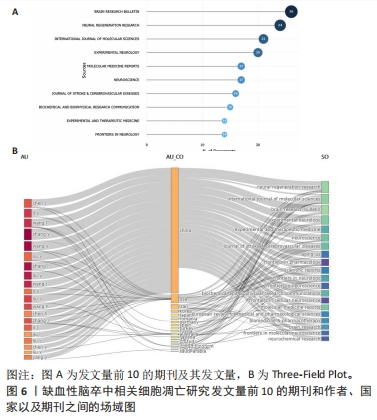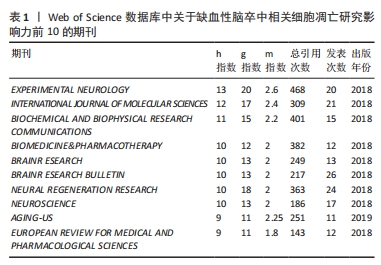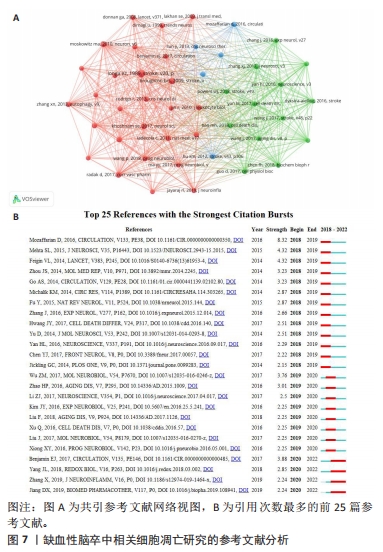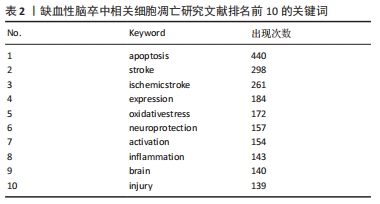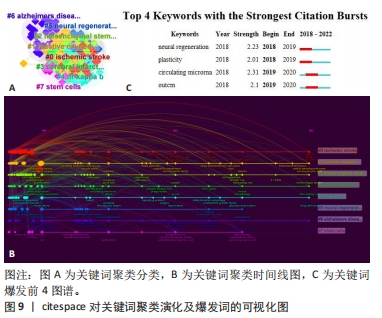[1] FESKE SK. Ischemic Stroke. Am J Med. 2021;134(12):1457-1464.
[2] SAINI V, GUADA L, YAVAGAL DR. Global Epidemiology of Stroke and Access to Acute Ischemic Stroke Interventions. Neurology. 2021;97(20 Suppl 2):S6-S16.
[3] GUZIK A, BUSHNELL C. Stroke Epidemiology and Risk Factor Management. Continuum (Minneap Minn). 2017;23(1):15-39.
[4] BELAGAJE SR. Stroke Rehabilitation. Continuum (Minneap Minn). 2017;23(1):238-253.
[5] LI J,WANG L,CHAO BH, et al. Prevalence of stroke in China:an epidemiological study based on the National Stroke Screening Survey. Lancet. 2015;386(S381):S349.
[6] 吴亚哲,陈伟伟. 中国脑卒中流行概况[J]. 心脑血管病防治,2016,16(6):410-414.
[7] COLEMAN ER, MOUDGAL R, LANG K, et al. Early Rehabilitation After Stroke: a Narrative Review. Curr Atheroscler Rep. 2017;19(12):59.
[8] DURUKAN A, TATLISUMAK T. Acute ischemic stroke: overview of major experimental rodent models, pathophysiology, and therapy of focal cerebral ischemia. Pharmacol Biochem Behav. 2007; 87(1):179-197.
[9] DIRNAGL U, IADECOLA C, MOSKOWITZ MA. Pathobiology of ischaemic stroke: an integrated view. Trends Neurosci. 1999;22(9):391-397.
[10] TANG H, GAMDZYK M, HUANG L, et al. Delayed recanalization after MCAO ameliorates ischemic stroke by inhibiting apoptosis via HGF/c-Met/STAT3/Bcl-2 pathway in rats. Exp Neurol. 2020;330:113359.
[11] MAO R, ZONG N, HU Y, et al. Neuronal Death Mechanisms and Therapeutic Strategy in Ischemic Stroke. Neurosci Bull. 2022;38(10):1229-1247.
[12] CANCINO CA, MERIGO JM, CORONADO F, et al. Forty Years ofComputers&Industrial Engineering:A Bibliometric Analysis. Comput Ind Eng. 2017;113:614-629.
[13] DING Y, CHOWDHURY GG, FOO S. Bibliometric Cartography of Information Retrieval Research by Using Co-Word Analysis. Inform Process Manag. 2001;37(6):817-842.
[14] QIU Y, YANG W, WANG Q, et al. Osteoporosis in postmenopausal women in this decade: a bibliometric assessment of current research and future hotspots. Arch Osteoporos. 2018;13(1):121.
[15] HE J, HE L, GENG B, et al. Bibliometric Analysis of the Top-Cited Articles on Unicompartmental Knee Arthroplasty. J Arthroplasty. 2021;36(5):1810-1818.e3.
[16] HUANG X, LIU X, SHANG Y, et al. Current Trends in Research on Bone Regeneration: A Bibliometric Analysis. Biomed Res Int. 2020;2020:8787394.
[17] CHEN J, YAO M, ZHAO Y, et al. Use of acupuncture to treat cerebral infarction in the last 10 years: A Scopus-based literature analysis. Neural Regen Res. 2012;7(36):2944-2951.
[18] 戴敏,王元姣.国内脑卒中患者排尿障碍的文献计量学分析[J]. 护理与康复,2019,18(12):9-12+16.
[19] FENG X, LIU C, GUO Q, et al. Research progress in rehabilitation treatment of stroke patients: A bibliometric analysis. Neural Regen Res. 2013;8(15):1423-1430.
[20] MA C, SU H, LI H. Global Research Trends on Prostate Diseases and Erectile Dysfunction: A Bibliometric and Visualized Study. Front Oncol. 2021;10:627891.
[21] MA D, YANG B, GUAN B, et al. A Bibliometric Analysis of Pyroptosis From 2001 to 2021. Front Immunol. 2021;12:731933.
[22] VAN ECK NJ, WALTMAN L. Software survey: VOSviewer, a computer program for bibliometric mapping. Scientometrics. 2010;84(2):523-538.
[23] ARIA M, CUCCURULLO C. Bibliometrix: AnR-Toolfor Comprehensive Science Mapping Analysis. J Informetr. 2017;11(4):959-975.
[24] ROMERO L, PORTILLO-SALIDO E. Trends in Sigma-1 Receptor Research: A 25-Year Bibliometric Analysis. Front Pharmacol. 2019;10:564.
[25] FERNANDES S, JIT M, BOZZANI F, et al. A bibliometric analysis of systematic reviews on vaccines and immunisation. Vaccine. 2018;36(17):2254-2261.
[26] YIN J, WAN J, ZHU J, et al. Global trends and prospects about inflammasomes in stroke: a bibliometric analysis. Chin Med. 2021;16(1):53.
[27] CHENG P, TANG H, DONG Y, et al. Knowledge Mapping of Research on Land Use Change and Food Security: A Visual Analysis Using CiteSpace and VOSviewer. Int J Environ Res Public Health. 2021;18(24):13065.
[28] YANG X, WANG X, LI X, et al. Exploring emerging IoT technologies in smart health research: a knowledge graph analysis. BMC Med Inform Decis Mak. 2020;20(1):260.
[29] CHEN S, BIE R, LAI Y, et al. Trends and Development in Enteral Nutrition Application for Ventilator Associated Pneumonia: A Scientometric Research Study (1996-2018). Front Pharmacol. 2019;10:246.
[30] SU Y, YU Y, ZHANG N. Carbon emissions and environmental management based on Big Data and Streaming Data: A bibliometric analysis. Sci Total Environ. 2020;733:138984.
[31] WRITING GROUP MEMBERS, MOZAFFARIAN D, BENJAMIN EJ, et al. Heart Disease and Stroke Statistics-2016 Update: A Report From the American Heart Association. Circulation. 2016;133(4):e38-e360.
[32] BENJAMIN EJ, BLAHA MJ, CHIUVE SE, et al. Heart Disease and Stroke Statistics-2017 Update: A Report From the American Heart Association. Circulation. 2017;135(10):e146-e603.
[33] YANG JL, MUKDA S, CHEN SD. Diverse roles of mitochondria in ischemic stroke. Redox Biol. 2018;16:263-275.
[34] ZHANG X, ZHU XL, JI BY, et al. LncRNA-1810034E14Rik reduces microglia activation in experimental ischemic stroke. J Neuroinflammation. 2019;16(1):75.
[35] JIANG D, SUN X, WANG S, et al. Upregulation of miR-874-3p decreases cerebral ischemia/reperfusion injury by directly targeting BMF and BCL2L13. Biomed Pharmacother. 2019;117:108941.
[36] LIU X, LIU N, ZHOU M, et al. Bibliometric analysis of global research on the rehabilitation of spinal cord injury in the past two decades. Ther Clin Risk Manag. 2018;15:1-14.
[37] LIU ZG, YIN YM, LIU WD, et al.Visualizing the intellectual structure and evolution of innovation systems research:a bibliometric analysis.Scientometrics.2015;103(1):135-158.
[38] CHEN C. Searching for intellectual turning points: progressive knowledge domain visualization. Proc Natl Acad Sci U S A. 2004;101 Suppl 1(Suppl 1):5303-5310.
[39] SONG Y, LI Z, HE T, et al. M2 microglia-derived exosomes protect the mouse brain from ischemia-reperfusion injury via exosomal miR-124. Theranostics. 2019;9(10):2910-2923.
[40] WU F, HAN B, WU S, et al. Circular RNA TLK1 Aggravates Neuronal Injury and Neurological Deficits after Ischemic Stroke via miR-335-3p/TIPARP. J Neurosci. 2019;39(37):7369-7393.
[41] SCHMITZ SU, GROTE P, HERRMANN BG. Mechanisms of long noncoding RNA function in development and disease. Cell Mol Life Sci. 2016;73(13):2491-2509.
[42] DENG QW, LI S, WANG H, et al. Differential long noncoding RNA expressions in peripheral blood mononuclear cells for detection of acute ischemic stroke. Clin Sci (Lond). 2018;132(14):1597-1614.
[43] WANG Q, LIU X, ZHU R. Long Noncoding RNAs as Diagnostic and Therapeutic Targets for Ischemic Stroke. Curr Pharm Des. 2019;25(10):1115-1121.
[44] WANG P, SHAO BZ, DENG Z, et al. Autophagy in ischemic stroke. Prog Neurobiol. 2018;163-164:98-117.
[45] YANG JL, MUKDA S, CHEN SD. Diverse roles of mitochondria in ischemic stroke. Redox Biol. 2018;16:263-275.
[46] WU L, XIONG X, WU X, et al. Targeting Oxidative Stress and Inflammation to Prevent Ischemia-Reperfusion Injury. Front Mol Neurosci. 2020;13:28.
[47] DATTA A, SARMAH D, MOUNICA L, et al. Cell Death Pathways in Ischemic Stroke and Targeted Pharmacotherapy. Transl Stroke Res. 2020;11(6):1185-1202.
[48] ANASTASIOU E, LORENTZ KO, STEIN GJ, et al. Prehistoric schistosomiasis parasite found in the Middle East. Lancet Infect Dis. 2014;14(7):553-554. |
